Direction (1-5): Read the following pie chart carefully and answer the given question.
The given Pie chart shows percent by which a product is marked up in five different (A, B, C, D and E) shop. The Cost price of article is Rs. 2500
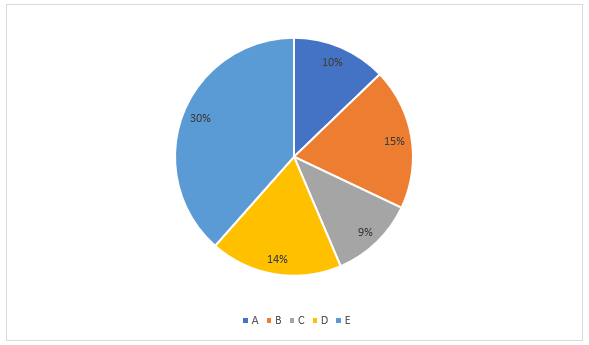
Q1. What is the ratio of marked price of the article in Shop A to the article in Shop E?
(a) 11∶13
(b) 12∶17
(c) 13∶11
(d) 15∶13
(e) 9∶11
Q2. If the selling Price of a article in shop C is Rs. 2200, then find the discount percent given by shop C (in approx.).
(a) 16%
(b) 29%
(c) 19%
(d) 11%
(e) 25%
Q3. If the cost price is increased by 10% and the discount given on the article by Shop D is 10%, then find the Profit percent on the article.
(a) 4.6%
(b) 10%
(c) 3.9%
(d) 2.6%
(e) 3.3%
Q4. What is the average of marked price of article on shop A, B and D.
(a) Rs.2800
(b) Rs.3225
(c) Rs.1925
(d) Rs.2500
(e) Rs.2825
Q5. What is the difference between the marked of article in shop A and E together and the Marked Price of article in Shop B and C together.
(a) Rs. 450
(b) Rs. 400
(c) Rs. 550
(d) Rs. 420
(e) Rs. 390
Directions (6-10): Read the following bar graph carefully and answer the questions given below.
Bar graph shows total number of flats (2BHK & 3BHK) and percentage of 2BHK flats in five different apartments.
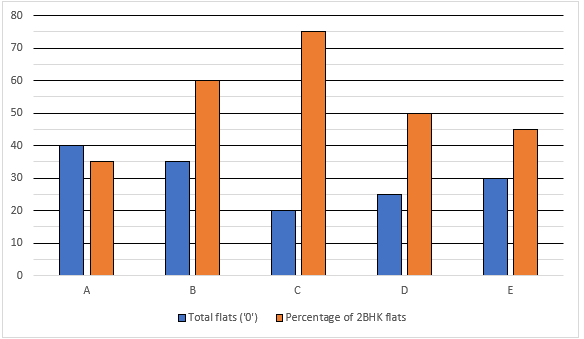
Q6. Find the ratio of 3BHK flats in E to 2BHK flats in D.
(a) 37:25
(b) 38:21
(c) 39:23
(d) 32:27
(e) 33:25
Q7. In apartment X, 3BHK flats are 70% of the 2BHK flats in B and ratio of 3BHK flats to 2BHK flats in X is 7:5 respectively. Find the difference between total flats in C and that in X.
(a) 48
(b) 64
(c) 56
(d) 52
(e) 76
Q8. If 1BHK flats in C is 45% of the 3BHK flats in B, then find the 1BHK flats in C is what percentage of 2BHK flats in D?
(a) 50.4%
(b) 45.2%
(c) 64.5%
(d) 66.4%
(e) 40.8%
Q9. 3BHK flats in C is how much percentage more/less than average number of 2BHK flats in D & E together (approx.)?
(a) 61.5%
(b) 50.5%
(c) 38%
(d) 45%
(e) 56.5%
Q10. 3BHK flats in B & C together is how much more/less than 2BHK flats in A & D together.
(a) 45
(b) 65
(c) 15
(d) 75
(e) 35
Direction (11 – 15): The line graph shows the total number of questions (quants + reasoning) solved by six (P, Q, R, S, T & U) students. Read the data carefully and answer the following questions.
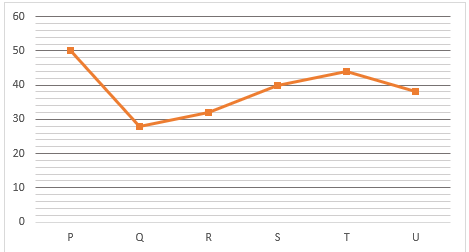
Q11. The total number of questions solved by R is what percent less than the total questions solved by S?
(a) 20%
(b) 25%
(c) 15%
(d) 10%
(e) 30%
Q12. Total number of questions solved by Z is 20% more than that of P and number of quants questions solved by Z is 40% of total questions solved by him. Find the total number of reasoning questions solved by Z.
(a) 30
(b) 28
(c) 36
(d) 32
(e) 40
Q13. Find the average number of questions solved by P, R & U?
(a) 42
(b) 48
(c) 40
(d) 36
(e) 44
Q14. 25% of the questions solved by T is wrong. Find the difference between total number of wrong and right questions solved by T (questions solved by T is either wrong or right).
(a) 24
(b) 20
(c) 28
(d) 22
(e) 30
Q15. If the ratio of total quants to reasoning questions solved by Q is 5: 9, then find total quants questions solved by Q is how much more/less than the total question solved by S?
(a) 30
(b) 28
(c) 12
(d) 15
(e) 20
Solutions
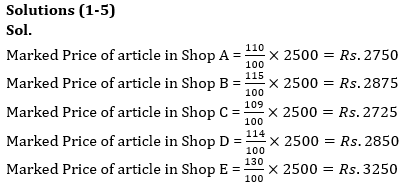
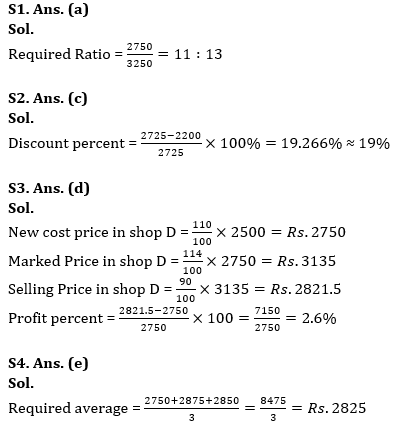
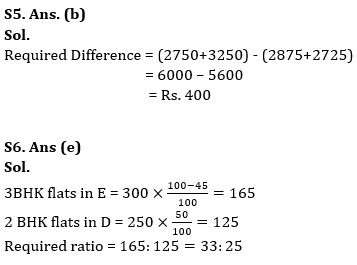
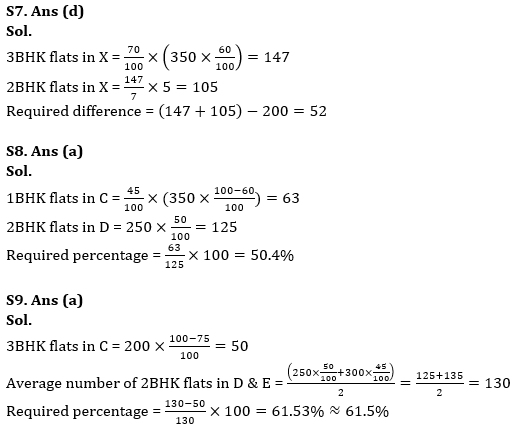
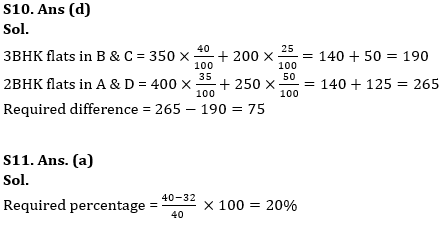
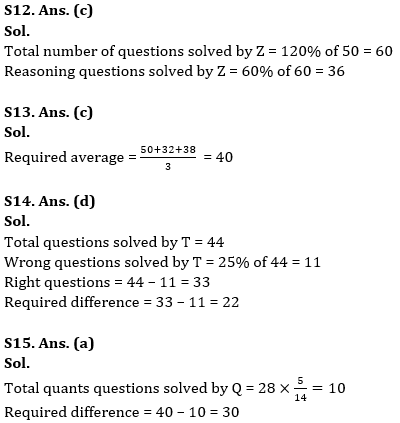
 .
.




 Data Interpretation Questions for SBI PO...
Data Interpretation Questions for SBI PO...
 Data Interpretation Questions For Bank E...
Data Interpretation Questions For Bank E...
 Quantitative Aptitude Quiz For Bank Main...
Quantitative Aptitude Quiz For Bank Main...





